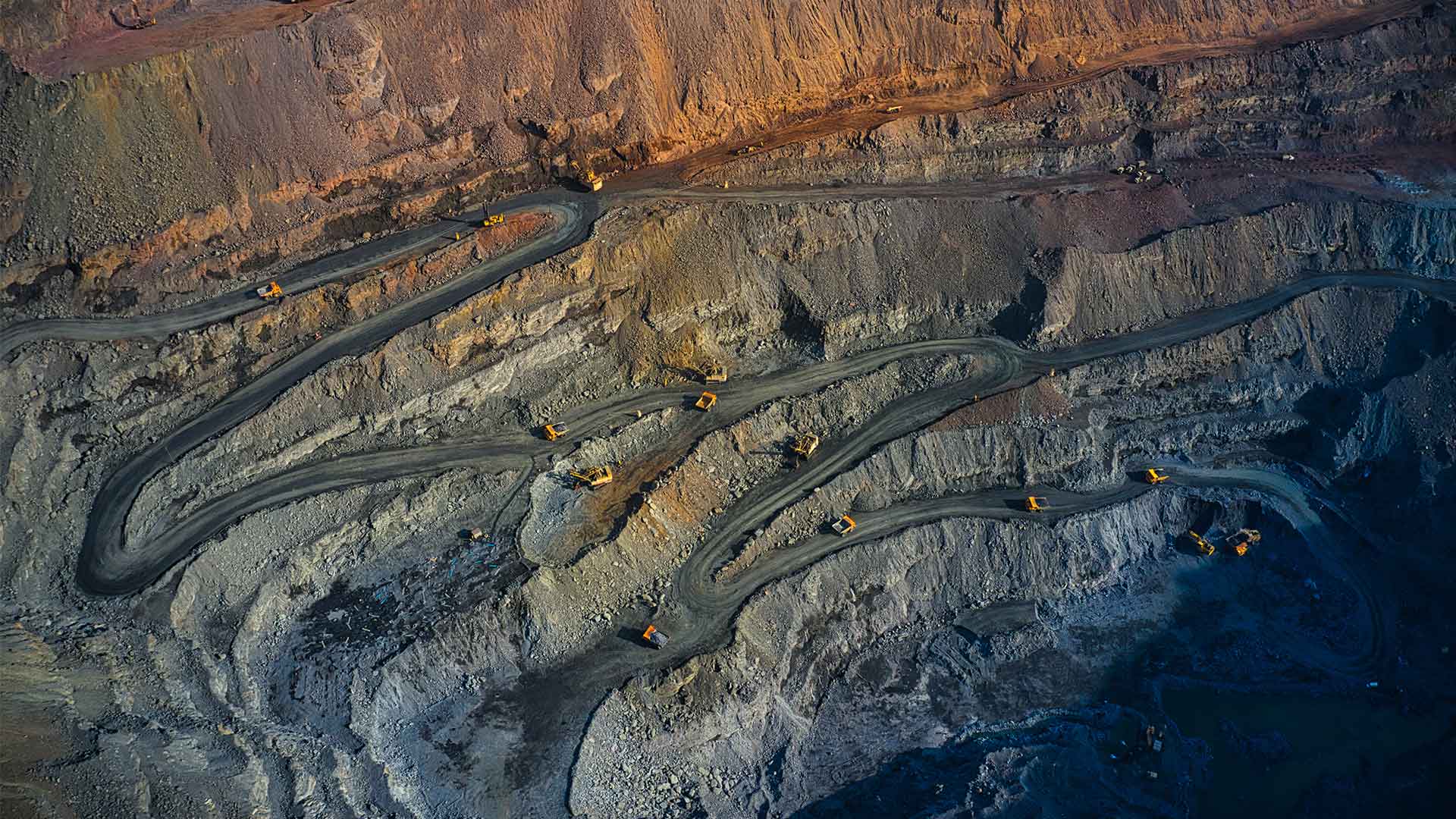Decarbonization, Boron and Mining
The mining and metal industry is one of the most carbon-intensive industries in the world, generating a sizable percentage of global greenhouse gas emissions.
How quickly has decarbonization been going on in the mining and metal industry? There are broadly two different facets of decarbonization: (1) changes in production methods for raw materials; and (2) supply chains for downstream products. We’ll also look at some reasons why decarbonizing these sectors may be more difficult than it seems.
Mining Sector
Climate change is a real and increasingly pressing issue for the mining industry, and it’s become an important discussion topic in recent years. Mining operations are already known to thrive in harsh regions. From the blistering heat of deserts to flooding from rain and snowmelt, mining operators are used to doing business under a variety of circumstances. The forecast for heavy precipitation events will only become more frequent with climate change; as such, physical challenges that precipitate out into hazardous conditions will rise significantly over time due mainly because these effects have been consistent throughout history.
Defining goals
As awareness of the repercussions of climate change continues to grow, so does pressure from leaders around the world. Recently, many mining companies have aligned themselves with international targets that aim to reach zero greenhouse gas emissions by 2050 in order to lessen their impact on our ecosystems and move towards a sustainable future.
Decarbonizing the global economy is critical to meeting climate change goals. Mined materials are essential in much of the world’s supply chain, and while governments such as Europe have taken steps to reduce their dependence on coal for electricity production by increasing renewable energy sources like solar power, they still depend heavily on mined raw materials. Shareholders push companies worldwide to take more significant action against climate change through sustainable practices and other innovations that show a commitment towards sustainability moving forward into the 2020s.
Taking a hard look at the problem
To start, let’s take a closer look at the mining sector through an example from Canada. Extracting ore often involves blasting with dynamite or use of heavy machinery to extract minerals like gold and copper which are then refined into metals using chemical processes that require high-temperature furnaces, sulfuric acid, nitric oxide gas and other hazardous chemicals. These types of operations produce large quantities of coal ash as well as particulate matter emissions such as dust and aerosols which contribute to air pollution and the formation of smog.
Mining is responsible for 4% to 7% of global greenhouse gas emissions in terms of the sector’s Scope 1 and Scope 2 emissions, according to January estimates from McKinsey & Co. Including scope 3 emission links mining with about 28%.
In 2015, it was found out that half of the global greenhouse gas emissions were traced to just 50 companies. Out of those 50, 20 of them were mining companies.
Finding a solution
In 2018, the average ore grade in the U.S. mining industry was 0.36%, compared to an average of around one per cent 40 years ago when more than three-quarters of all metal production came from underground mines using opencast methods with higher grades of ores that were extracted easily because they lay closer to the surface (USGS).
A recent study found out that decarbonization progresses at a rate of about 11% per year for companies operating under stricter policies on carbon dioxide emissions – like those set by The Paris Agreement or EU regulation – while companies without such restrictions progress slower at just five per cent a year (BP Statistical Review cited by McKinsey & Co.).
As the world shifts to an economy with reduced emissions, many coal miners are going to have a hard time. However, other mining industries will see increased demand for new technologies supporting decarbonization efforts such as wind turbines and solar energy production equipment. For example, electric vehicles and battery storage may create growth markets for lithium, nickel & cobalt which are all materials used in these growing tech sectors.
Emerging technologies in hydrogen fuel cells and carbon capture could have a big impact on the demand for platinum, palladium, and other materials.
Materials like Boron are strongly catching on as solar energy in the EU starts to expand. It has seen strong demand from solar energy producers since it’s being introduced into Europe through new regulations set by the EU to lower emissions.
After multiple research projects backing the efficiency of Boron as a better energy carrier, it could mean that Boron can play an instrumental role in the future of decarbonizing the mining industry. Mines like that of Rio Tinto are already in talks of being shifted to a solar-powered model to cut down on emissions.
How quickly is the mining industry decarbonizing?
Decarbonization in the mining and metal industry has been an important topic for a number of years as many companies have come under stricter policies on carbon dioxide emissions – like those set by The Paris Agreement or EU regulation.
Companies with stricter monitoring are going through decarbonization at a faster pace than unregulated companies but there’s more. If we have to decarbonize the mining industry by a substantial amount, engineers will have to come up with better energy distribution frameworks that harness the complete potential of solar energy and make it reliable enough to be used at a mining site as the sole energy source.
For this, companies will have to start adjusting with the idea that they may need to make substantial capital investments to replace the current energy infrastructure with the new ones.
Metal Production
Changes in production methods have been largely driven by declining ore grades – meaning deposits containing lower amounts of valuable ore minerals per unit volume than before – as opposed to any overarching trend toward cleaner practices. Supply chain-driven initiatives to reduce emissions and resource consumption have also been key.
As the world has moved towards a carbon-light future, decarbonization metal production is critical to maintaining our society’s current industrial infrastructure. Metallic elements are of crucial importance for many technologies such as semiconductors and wind turbines. The particular use varies depending on which element it corresponds with: ruthenium strengthens catalysts in manufacturing fuel cells; cobalt stabilizes batteries by preventing them from overheating or exploding due to the high melting point that also makes it an essential raw material for durable rechargeable lithium-ion batteries used in electric cars; platinum can be found not only across nearly every car but some jewellery too!
Can we decarbonize steel?
Steel is a staple in many of the materials we use today. Originally, it was meant to be used for engineering and construction but has found its way into more aspects than anyone could have anticipated- including our food! And now that there’s pressure on steel producers to reduce their carbon footprint, they are turning towards new innovations like decarbonization techniques. They’re looking at how emissions can be created without needing as much energy by limiting where these processes take place which will really help cut down production costs across the board while also being environmentally friendly.
The global steel industry is in a dire situation. Under the current business model, they could be forced to shut down 14% of their factories due to environmental concerns and costs.
Looking at technology for solutions
Steel production can be done by either an integrated blast furnace (BF)/basic oxygen furnace (BOF) or electric arc furnaces. Integrated producers use iron ore and coal as their main raw material, whereas EAFs often rely on steel scrap or direct reduced iron for their materials. Steel is the predominant form of metal in Europe, making it important to assess alternative technologies that reduce carbon dioxide emissions from this process.
Meanwhile, the manufacturing sector has to reduce its reliance upon the traditional forms of steel and look towards newer alternatives for better results. For example, Boron steel is being considered to be used in the place of nickel steels in transmission gears. Boron steels are known to handle the high temperatures of transmission gears better than nickel steel.
The industry of hydrogen production is very popular in the world. Although it’s not as abundant and easy to extract from compounds, there are ways that can make hydrogen accessible for any environment.
One way would be carbon dioxide intensive extraction methods, which have been known to produce a lot of energy at one time with less investment on their part but also create more pollution towards our earth by emitting greenhouse gases such as carbon dioxide into the atmosphere; these emissions come from both water use during hydrolysis processes and methane reforming when producing natural gas-derived hydrogen via steam cracking.
On the other hand, we have “blue” or clean approaches where they take advantage of waste products instead of carbon dioxide. Additionally, “green hydrogen” is created by the electricity-intensive electrolysis of water and may be used to power our cars in a carbon-neutral way.
Conclusion
As The Paris Agreement continues in full swing and governmental authorities begin to crack down on companies to improve their infrastructure, we can expect decarbonization to be a practical goal than a fantasy.






